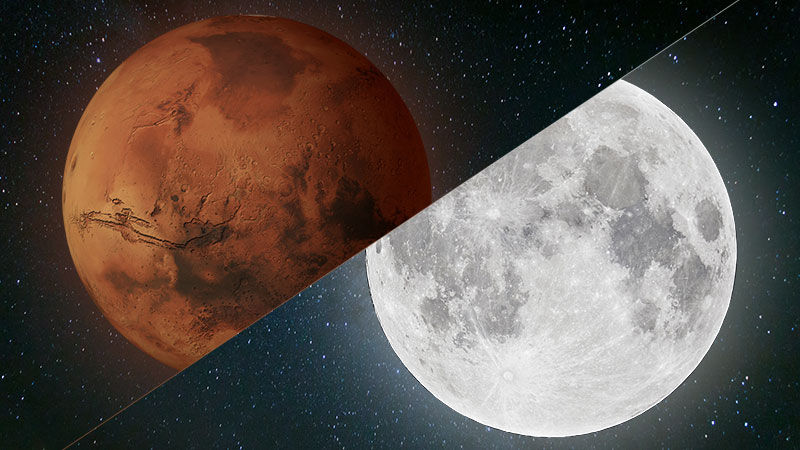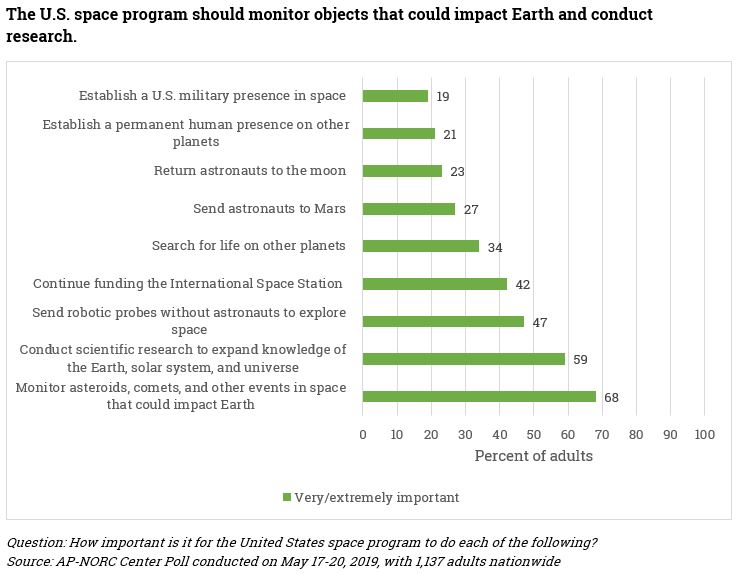Where will the Americans fly: to Mars or to the moon?
- Transfer

In accordance with the directive of the President of the United States, a stable presence on the Moon will become a stepping stone to subsequent space achievements, such as Mars. D. Trump recently made it clear that he prefers to quickly implement the plan of flight to Mars, writing on Twitter a few weeks ago: “Despite all the money we spend, NASA should not talk about flying to the moon - we did it 50 years ago and now focused on the much larger things we do, including flying to Mars. ”
Nearly two years ago, Vice President Mike Pence made an official statement on the space policy of the administration, saying that NASA would reorient its program to "renew the US presence on the moon, which is a vital strategic goal." In December 2017, President Trump signed the relevant document.
A new poll, referred to as 1.137, shows that the topic of sending people to the moon or to Mars does not correspond to the opinion of most Americans. Surveys conducted by the Associated Press-NORC Public Relations Research Center suggest that only one in four Americans thinks sending people to the moon or Mars is “extremely” important.

By comparison, 59 percent of respondents believe that scientific research on Earth, in the solar system and in the universe is very important for NASA. An even greater number, 68 percent, attach such importance to monitoring asteroids, comets, or other objects from space that can hit the Earth.
These data are consistent with the results of a study conducted by the Pew Research Center about a year ago, which showed that most of the population is much more interested in studying environmental issues, climate and protecting the planet from asteroids than in manned flight and exploration of the Moon and Mars.
A lot of money, few results.
Americans like the idea of a space program, and they appreciate the automatic interplanetary stations landing on Mars. Most Americans believe that NASA absorbs a quarter of the US budget. In fact, his budget is less than half a percent.
Americans also realize that they are not getting a high return on their space research investments, especially when it comes to deep space. For example, over the past 15 years, NASA has been creating a deep space exploration program, mainly the Orion spacecraft, SLS and Ares V rockets, as well as their launch systems.
It cost almost $ 50 billion. And for what? None of these devices are ready for manned space flights, and in reality people are unlikely to be able to use them for spacewalk until the mid-2020s.
The Trump administration is likely to continue to “master” the Martian manned program, despite promises of a lunar landing in 2024. It is planned to spend more than $ 3 billion annually on the development of Orion and rockets. But a budget change is also possible depending on the circumstances.
